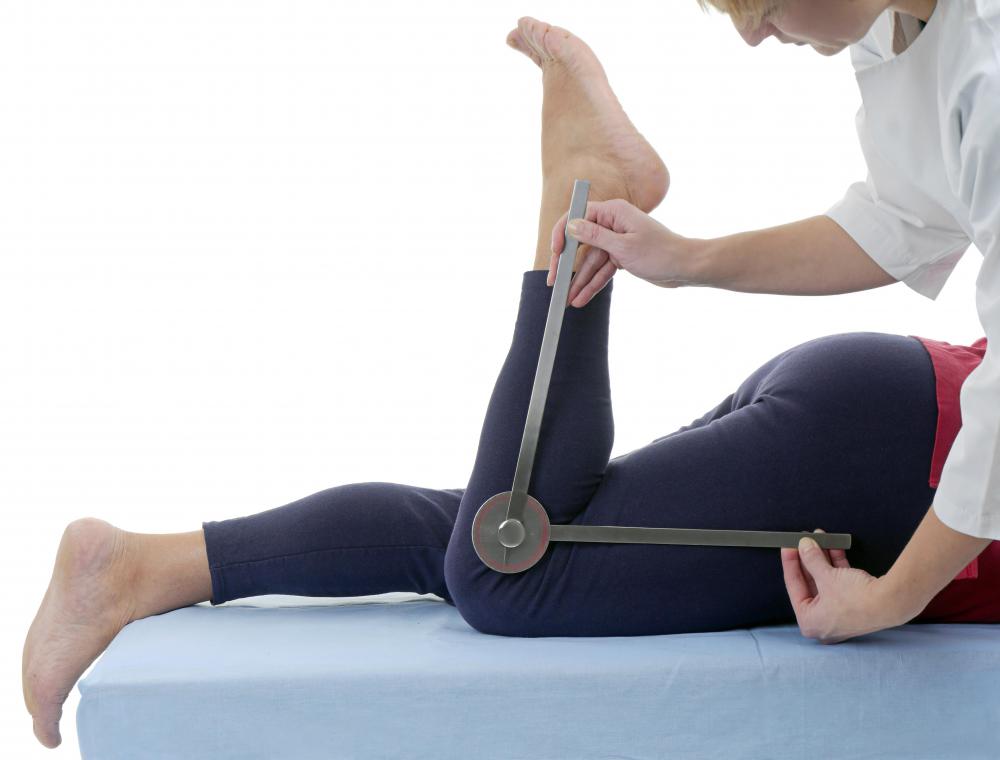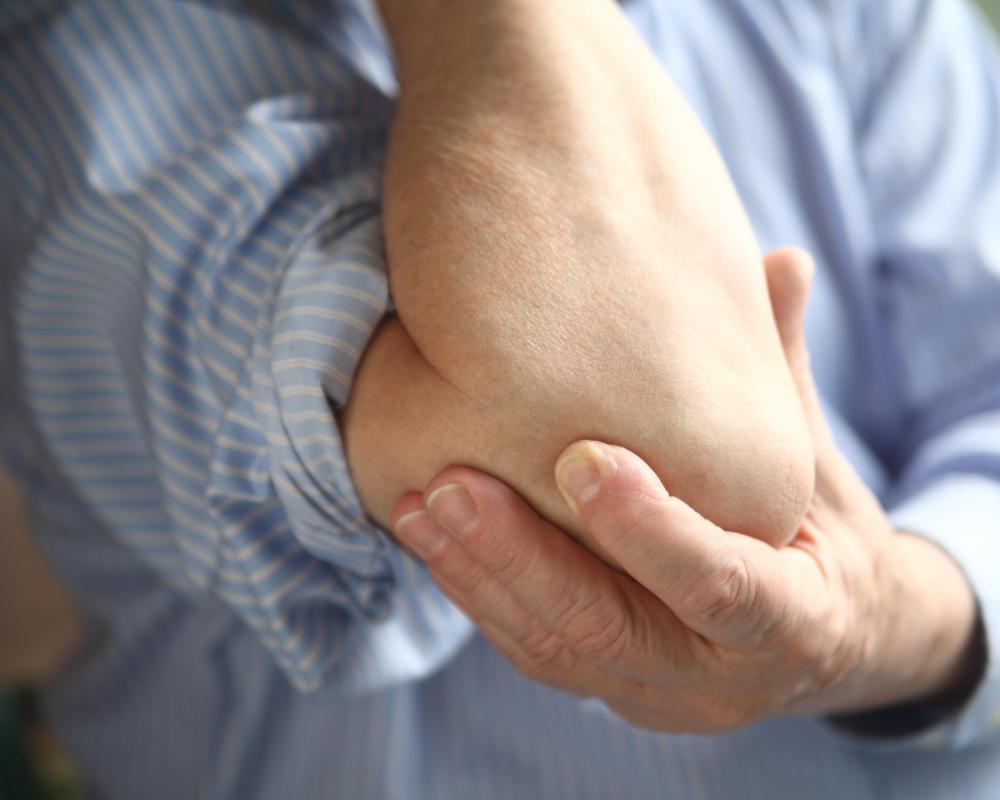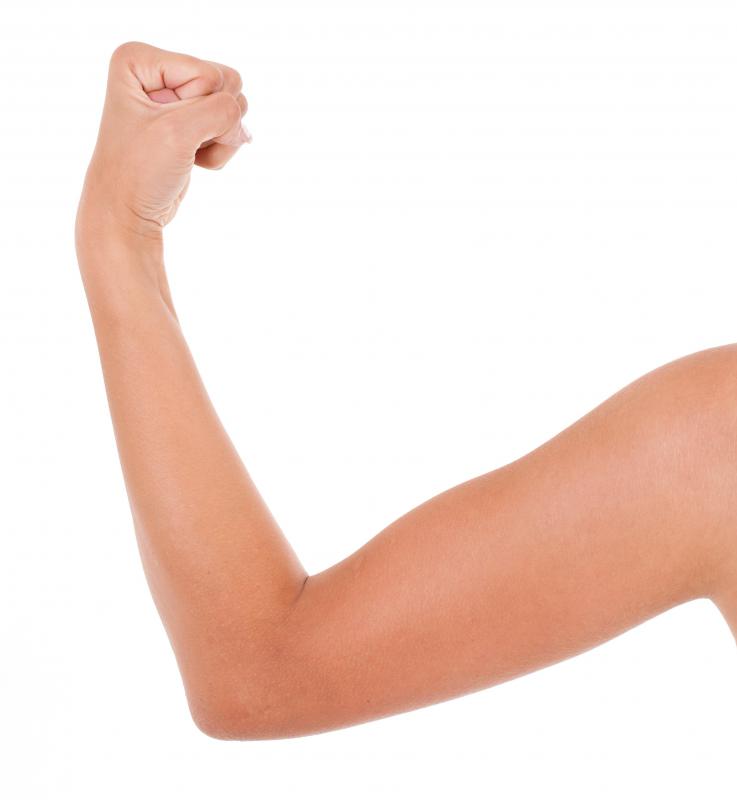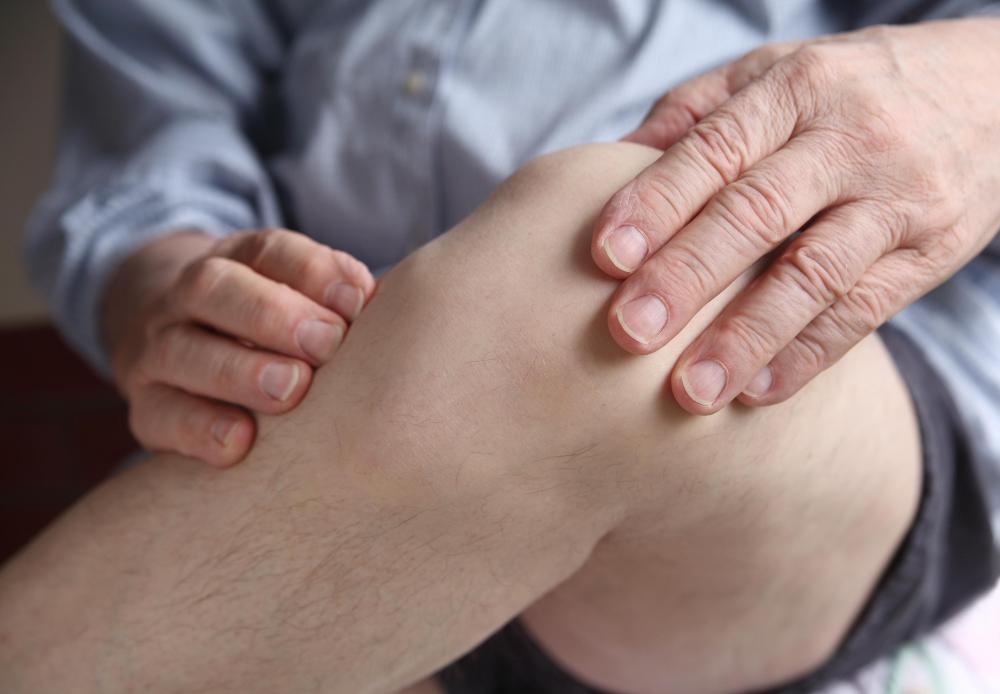At TheHealthBoard, we're committed to delivering accurate, trustworthy information. Our expert-authored content is rigorously fact-checked and sourced from credible authorities. Discover how we uphold the highest standards in providing you with reliable knowledge.
What is a Hinge Joint?
A hinge joint, also called a ginglymus, is a joint that allows only backward and forward motion. A joint is the place where two bones articulate, or connect, usually to allow movement. The body has several types of joints which may be classified based on structure, function, biomechanical classification, and range of movement. Any given joint may fall under several of these categories. Hinge joint classification is based on range of motion.
Hinge joints are so named because they resemble hinges, like one might find on a door. Some familiar examples of these joints are the elbow, which joins the humerus with the ulna, and the knee, which joins the femur with the tibia. Like a door, these joints can move back and forth, but cannot swivel or move in any other directions. Though ginglymi only move on one plane, they allow a very large range movement on that plane, which is why they are found in the limbs.

Like a hardware hinge, every joint in the body must be lubricated. While a door hinge may require oil to allow its components to glide easily without squeaking or creating harmful friction, a hinge joint in the body requires synovial fluid. A small amount of this lubricant, which resembles egg fluid, is secreted into each joint by the synovial membrane. This lubrication is important in preserving the large, painless range of unidirectional movement that ginglymi must have.

Hinge joints belong to a class of joints called synovial joints, named after the synovial fluid which all joints in this class have. In addition to the hinge joint, the synovial class also includes ball and socket joints, gliding joints, condyloid joints, pivot joints, and saddle joints. All synovial joints are characterized by articular cartilages that cover the articular surfaces of bones, or the area where bones connect. Articular cartilage is a type of hyaline cartilage, a connective tissue composed of Type II collagen and proteoglycan. This smooth cartilage protects the joints from wearing down and creating pain due to friction.

The joint is enclosed by the synovial membrane and sits close to the bursa, which also secretes lubricating fluid. In a hinge joint, the cylindrical head of one bone fits into the socket of the other bone, allowing perpendicular movement. Consider the elbow, where the ulna and radius bones of the forearm articulate with the bone of the upper arm, the humerus. The head of the ulna sits in the socket of the humerus, permitting the ulna to move perpendicularly to the humerus with the help of the triceps and biceps muscles. As in other joints, hinge joint movement is controlled by antagonistic pairings of muscles like the triceps and biceps, which contract and relax to extend or reduce the angle between the upper arm and forearm.

Movement should occur without discomfort, but several medical conditions may impede painless joint motion. Trauma may cause the joint to fracture or dislocate, causing friction or pressure on nerves. Bursitis, an inflammation of the bursa due to injury or chronic overuse of the joint, can also cause tenderness in the joint. Arthritis, particularly rheumatoid and osteoarthritis, commonly causes inflammation and pain in joints. Osteoarthritis is an irreversible disease that usually stems from chronic strain on the joint, and rheumatoid arthritis is a progressive autoimmune disorder for which there are treatments, but no known cure.
AS FEATURED ON:
AS FEATURED ON:
















Discussion Comments
@lovelife--When I worked for a physical therapy office the therapists would use the terms frozen joint and locked hinge joint for the same injury, so I believe it is the same thing. As far as a way to help loosen the joint, physical therapy is the obvious choice. You can also use heat or cold therapy, whichever the therapist recommends. I have also seen ultrasound therapy used as well. Hope your mom feels better soon.
Can anyone tell me if a locking hinge joint is the same as a frozen joint? My mom just got a diagnosis of a frozen shoulder and it is very painful. Also any ideas on how to help get a locked joint mobile again?
Reading this, I imagine that hinge joints in the human body must be among the most painful and dangerous joints to injure through a sprain or break, and also the most prone to damage from joint diseases.
Post your comments